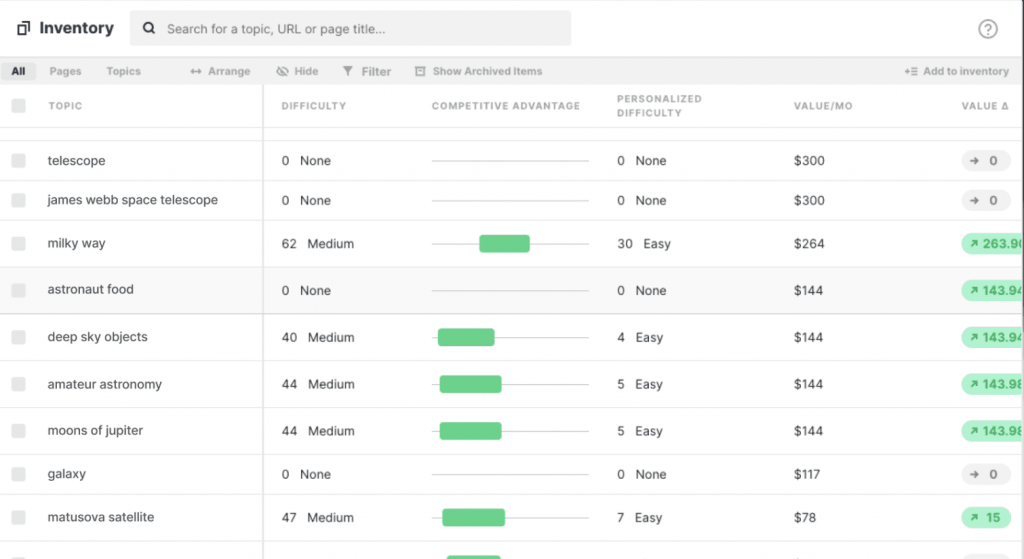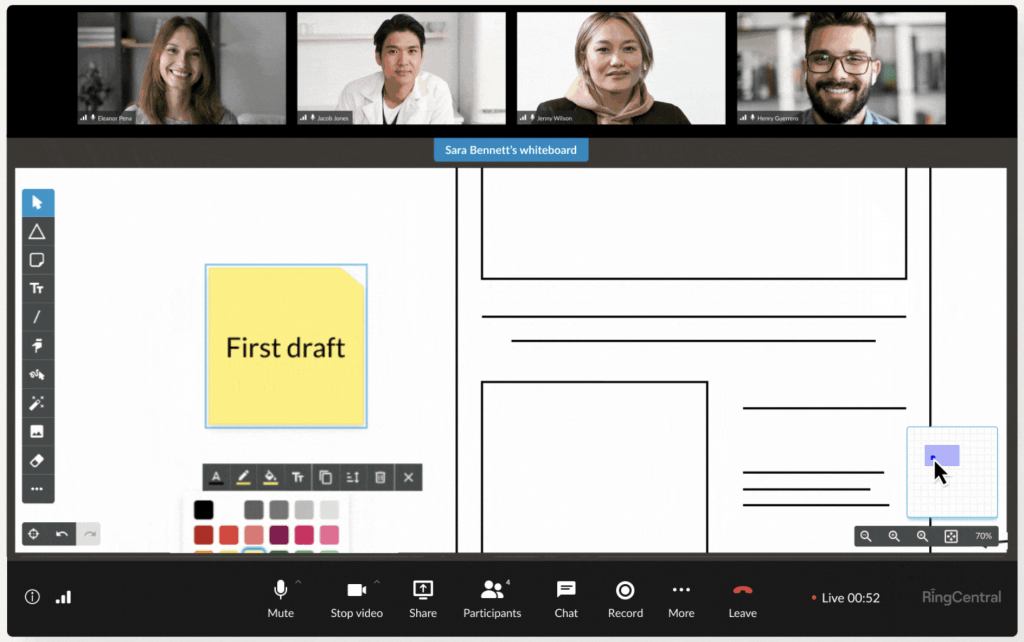
For more Creative Tools, check out the Freelancer Toolkit…
Search engine optimization (SEO) is becoming more important as the digital world changes—and so is the popularity of this career choice: an SEO content strategist.
A good SEO strategy not only makes a website more visible, but it also brings in targeted traffic.
In this blog, we’ll talk about what an SEO content strategist does, what skills and knowledge they need, and what tools they can use to make a good content strategy.
Let’s start with…
The Essential Components of SEO

On-page SEO
On-page SEO is the practice of optimizing website content. Doing on-page SEO is crucial, as it sends information about your website and how your content is relevant to search engines. That way, your website meets search intent and is optimized for visitors and web crawlers.
Google’s algorithms are updated constantly. The ranking of your website changes depending on whether or not your content matches search queries.
Incorporating primary keywords in your headline, alt text, meta description, and page URLs is a prime example of on-page SEO.
Off-page SEO
Off-page SEO is the practice of doing all the activities that are beyond your website to rank higher on search engines. These practices include link building, guest posting, and social media marketing, to name a few.
According to Google’s Andrey Lipattsev, links are among the top three ranking factors on Google. So, as an SEO content strategist, you need to get backlinks if you want your site to rank higher.
The value of your website depends on the quality of backlinks you get from high-authority websites. Guest posting is the practice of contributing and publishing blog posts for another website.
Off-page SEO helps increase your website’s exposure. That means you can bring people from other websites to your page by making it full of useful information. As this starts to happen more often, you’ll be more likely to increase your website traffic. That could also help in converting those visitors into customers. It’s a win-win situation for both parties.
Technical SEO
Technical SEO is a part of on-page SEO that helps to improve your website’s technical parts. That includes, but is not limited to, website speed and coding, making it easier for search engine bots to crawl.
Google and other search engines aim to deliver the best results to their users based on their search intent. When you have a website that’s easy to crawl, navigate, and index, you’ll have better chances of ranking higher.
Some factors that will help you achieve higher rankings include having a mobile-friendly website, a high level of security to visitors and no broken links.
Today, everyone is always online. They want information ASAP, so they’re only interested in websites that load quickly. This is why page speed is a crucial SEO ranking factor.
As the competition grows, websites need to be more content-heavy. However, if your page speed is slow, it’ll increase the bounce rate and negatively affect the user experience, website traffic, and, ultimately, your bottom line.
Steps to Create an Effective SEO Content Strategy

Analyze your target audience
Understanding your target audience is essential as an SEO content stratgeist. Changing your content to improve the user experience will bring in people who are likely to buy from you.
Moreover, it helps you develop content that speaks directly to and resonates with the right people. That, in turn, helps increase their engagement on-site as well as their chances of conversion.
Keyword Research
With keyword research, you analyze the search terms that people use to find relevant content. When you understand what terms your audience is searching for, you’ll be able to better craft content strategies. It’ll also improve your website’s traffic and search engine ranking.
In addition, keyword research can offer insights into your customer’s buying journey, allowing you to gain a better understanding of the terms they use.
Topic Clustering
Once you’re done with keyword research, topic clustering is what you should work on to stay ahead of your competitors.
Topic clusters are groups of content centered on a specific topic that help you decide how to include links in your content. It looks into topics or expected questions in more depth, focusing on less competitive keywords that are related to the main topic semantically.
Topic clusters have a lot of benefits, such as making your content more organized and thorough, improving your SEO, and making it easy to make pages that are related to the topic clusters.
Create a Content Calendar
A content calendar, also known as an editorial calendar, helps you track the production and publication of your content assets.
It makes it easy for writers, editors, and other important people to work together by giving them access to your content schedule. With this simple tool, you can make sure that all of the needed content assets are ready on time.
Having a content production flow in place can be the key to successful content marketing and help you attract your target audience. Also, by visualizing long-term and short-term goals, you can track your progress toward achieving success with your content plan.
Track Content Performance
Tracking the performance of your content strategies can help you determine what’s working for you and what areas you need to improve on. You can use tools to monitor search rankings, traffic potential, conversion, and ROI for your business. You can also keep track of time spent on a page, bounce rate, click-through rate, returning visitors, direct visitors, etc. to measure SEO performance.
Long-term monitoring of your website’s SEO can be done well with tools like Google Analytics. Find out about a wide range of important metrics to measure with, for example, GA4 for SEO purposes to make sure your site has the best organic search results.
Best Content Marketing Tools for SEO Growth
Ahrefs for keyword research

Ahrefs is a well-known tool for keyword research that provides a wide range of features for you to rank higher in search engines and get more traffic. It has a feature called “Keyword Explorer” that lets you find thousands of keyword ideas along with their difficulty score, click metrics, and traffic potential.
You can also use Ahrefs to monitor the ranking factors of your competitors so that you can create new topics based on the keywords.
With its Content Explorer, finding top-performing content for research and inspiration couldn’t be easier—just type a keyword into the search bar, and you’ll get an overview of the most popular web pages related to that topic.
Ahrefs also has a full set of useful SEO tools, such as a webmaster tool, a broken link checker, PPC keywords for AdWords, Google rank monitoring and more.
MarketMuse for content planning

MarketMuse is one of the versatile tools used for content planning. Its industry-leading AI-powered writing assistant benefits both the SEO and content marketing teams by helping create better content.
It has a feature called “Content Planning” that lets you find content gaps and ranking opportunities based on the value of the topic and how well your content is doing. Moreover, to avoid low-quality or outdated content, MarketMuse offers content optimization in their suite. It ensures high-quality content by providing suggestions for optimizing the pages.
You can also ask for content briefs on MarketMuse. The briefs cover everything, from title and keyword suggestions to linking suggestions.
Airtable for content calendar
Airtable is a powerful visual tool for creating content calendars. It’s best for building customized systems and workflows for content management.
Its drag-and-drop feature and easy-to-use interface let you make a content calendar that fits into your existing workflows. It also allows you to customize your views or even create multiple views (grid, form, calendar, and gallery).
Airtable is a great platform to keep your tasks and records organized. With its relational database, any changes you make will be reflected across all platforms. So, no matter the view or format of the data, it’s kept up-to-date. It also integrates with popular CRM platforms to provide features and information for content calendars all in one place.
RingCentral for remote collaboration

RingCentral Video Pro is a free video conferencing tool with built-in team messaging to support collaboration between remote teams. It offers a seamless and hassle-free meeting experience without the need to download the app. All you need to do is share the meeting link with your team members so that they can join directly from their browsers.
During video calls, you can use the whiteboard feature to draw out your ideas on a virtual canvas. Or you can use screen sharing to present SEO performance reports and annotate documents in real time.
Final Thoughts
To summarize, an SEO content strategist is a key part of making a website more visible online and getting more people to visit it.
As a professional in this field, it’s important to have a strong understanding of search engine algorithms, keyword research, and audience engagement. By staying up-to-date with industry trends and best practices, an SEO content strategist can effectively drive results for their clients.
Of course, it’s impossible to do all your work manually. You can experiment with these top-ranking tools and choose what works best. This way, you’ll be able to implement strategies faster and produce high-ranking content.
Want to be recognized as an expert in your field? At Twine, we have dozens of top-quality jobs being posted each and every day. There is a job waiting for your skills in everything from design to marketing, development, and copywriting. Join the marketplace of diverse creative talent here.



